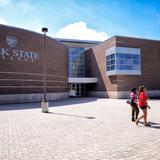- South Florida Community College?s 228-acre main Highlands Campus is located in Highlands County, Florida with 3 additional satellite campuses located throughout South Central Florida. At SFCC, we offer a multitude of quality and unique programs.
School Highlights
South Florida State College serves 3,807 students (41% of students are full-time).
The college's student:teacher ratio of 12:1 is lower than the state community college average of 20:1.
Minority enrollment is 61% of the student body (majority Hispanic), which is less than the state average of 67%.
Quick Stats (2025)
- Enrollment: 3,807 students
- In-state tuition: $3,175
- Out-state tuition: $11,869
- Student:teacher ratio: 12:1
- Minority enrollment: 61%
- Source: Integrated Postsecondary Education Data System (IPEDS)
Top Rankings
South Florida State College ranks among the top 20% of public schools in Florida for:
Category
Attribute
Debt For Students
School Overview
The teacher population of 315 teachers has stayed relatively flat over five years.
South Florida State College
(FL) Community College Avg.
Carnegie Classification
Baccalaureate/Associate's Colleges: Mixed Baccalaureate/Associate's
Not applicable, not in Carnegie universe (not accredited or nondegree-granting)
Institution Level
Four or more years
At least 2 but less than 4 years
Institution Control
Public
Private not-for-profit
Total Faculty
315 staff
139 staff
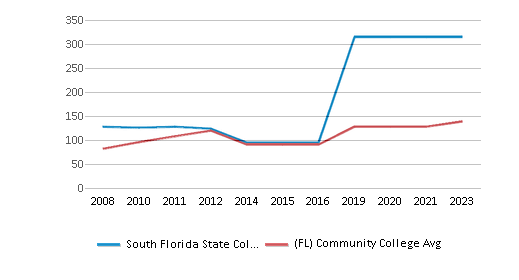
School Calendar
Student Body
The student population of South Florida State College has grown by 35% over five years.
The student:teacher ratio of 12:1 has increased from 9:1 over five years.
The South Florida State College diversity score of 0.67 is less than the state average of 0.76. The school's diversity has stayed relatively flat over five years.
Total Enrollment
3,807 students
646 students
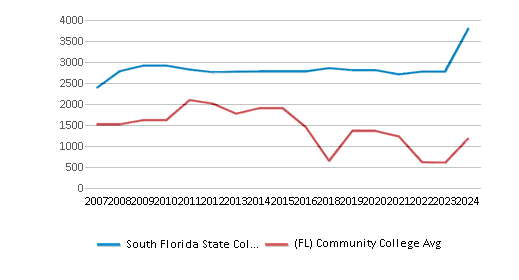
Student : Teacher Ratio
12:1
20:1
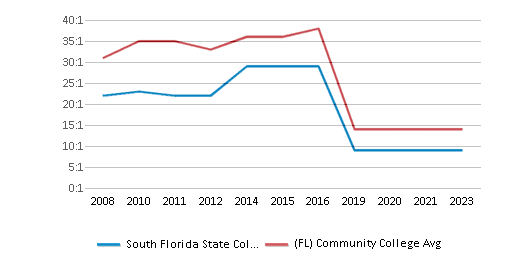
# Full-Time Students
1,575 students
587 students
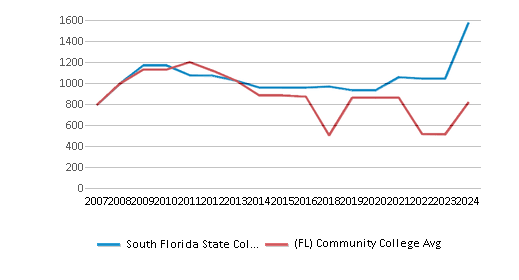
# Part-Time Students
2,232 students
557 students
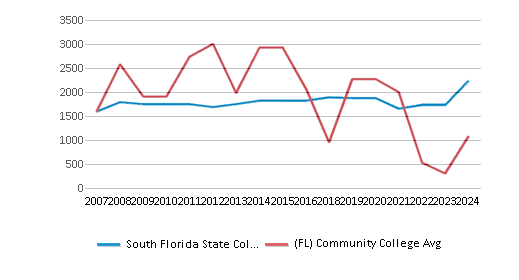
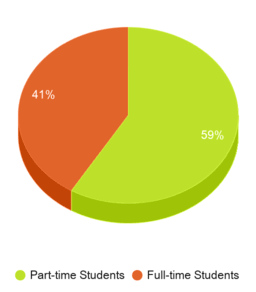
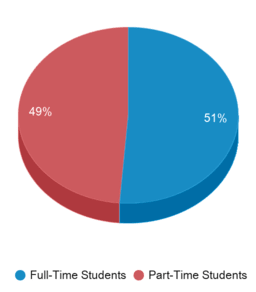
# Enrollment Undergraduate
380 students
261 students
# Full-Time Undergraduate Students
1,575 students
574 students
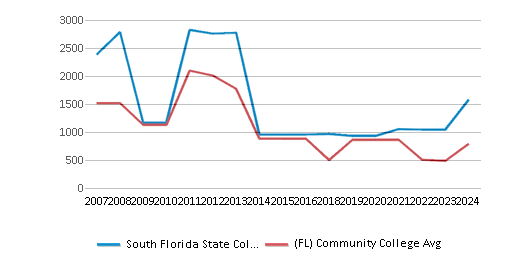
# Full-Time Graduate Students
n/a
85 students
# Part-Time Undergraduate Students
2,232 students
648 students
# Part-Time Graduate Students
n/a
36 students
Total Dormitory Capacity
n/a
174 students
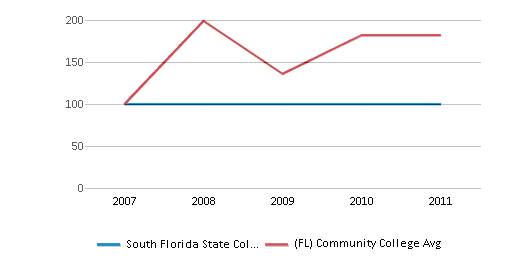
% American Indian/Alaskan
n/a
n/a
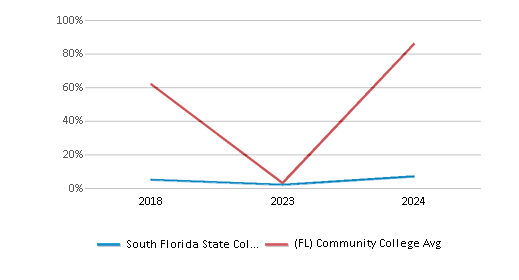
% Asian
2%
5%
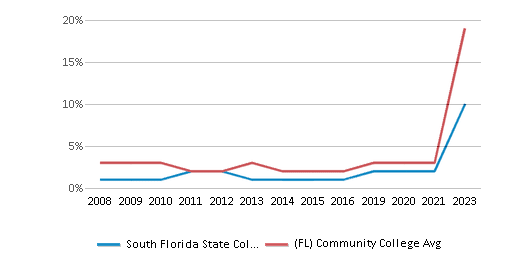
% Hispanic
41%
30%
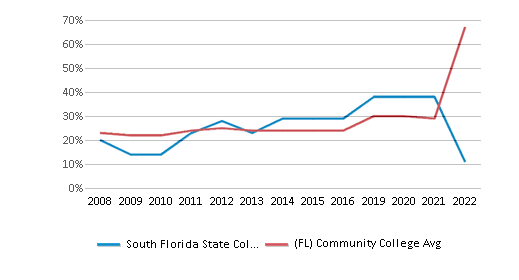
% Black
11%
19%
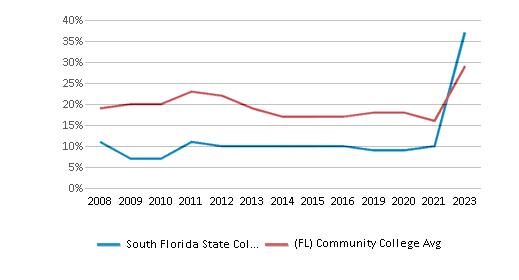
% White
39%
33%
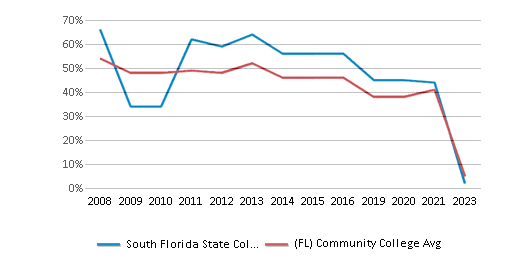
% Hawaiian
n/a
2%
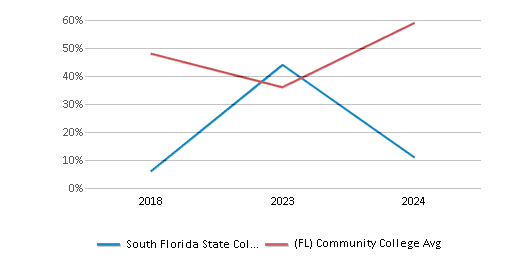
% Two or more races
2%
4%
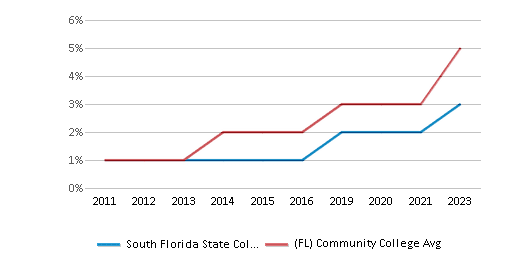
% Non Resident races
1%
2%
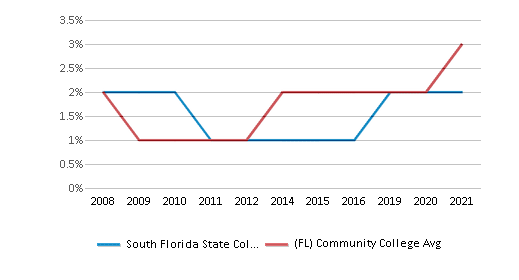
% Unknown races
4%
5%
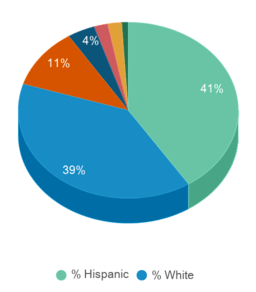
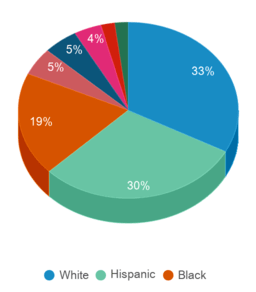
Diversity Score
0.67
0.76
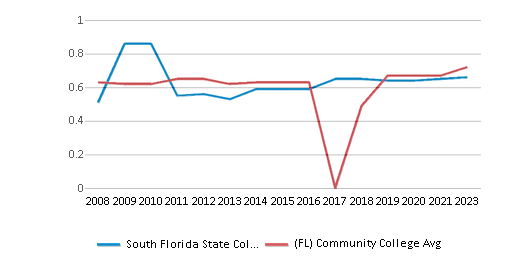
College Completion Rate (Students who graduate in less than 4 years)
38%
50%
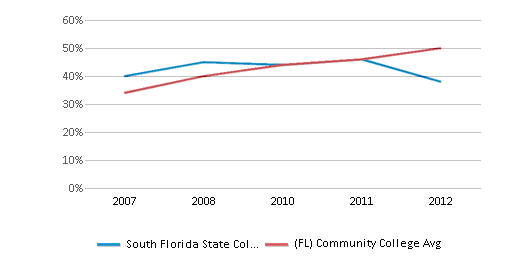
College Completion Rate (Students who graduate in 4 years or more than 4 years)
0.5644%
0.4334%
Average Graduate Earnings (10 Years)
$29,600
$31,500
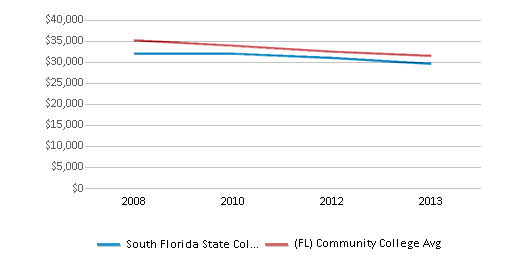
Tuition and Acceptance Rate
The public in-state tuition of $3,175 is less than the state average of $3,280. The in-state tuition has stayed relatively flat over four years.
The public out-state tuition of $11,869 is more than the state average of $10,578. The out-state tuition has stayed relatively flat over four years.
In-State Tuition Fees
$3,175
$3,280
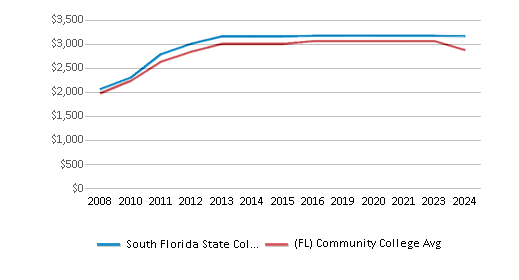
Out-State Tuition Fees
$11,869
$10,578
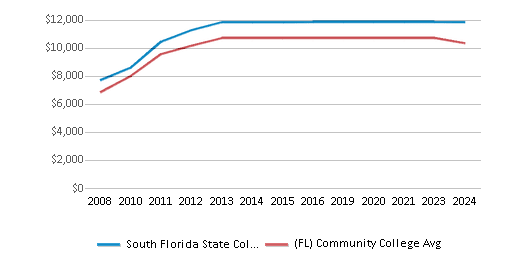
% Students Receiving Some Financial Aid
78%
88%
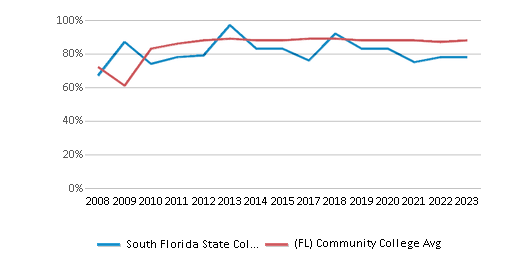
Median Debt for Graduates
$8,377
$9,750
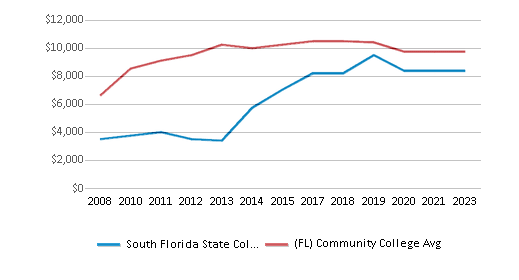
Median Debt for Dropouts
$4,001
$5,500
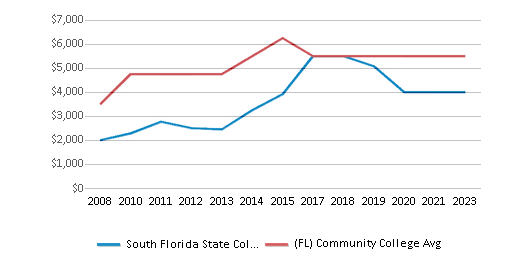
Acceptance Rate
n/a
94%
SAT Reading
n/a
442
SAT Math
n/a
429
ACT Composite
n/a
18
ACT English
n/a
18
ACT Math
n/a
18
Source: 2024 (or latest year available) Integrated Postsecondary Education Data System (IPEDS)
School Notes
- South Florida Community College takes a learner-centered approach to provide the highest quality academic programs and services. SFCC students may participate in a variety of college clubs and organizations, cultural events, games, intercollegiate athletics, and other programs. Many of these activities are supported by student activity fees. Students are encouraged to participate in the College's decision-making processes through active involvement in various College committees. SFCC was established in 1965 by the Florida Legislature to serve the educational needs of Highlands and Hardee counties. The College began operation in August 1966 in temporary facilities provided at no cost to the State by public-spirited citizens of the City of Avon Park. The facilities were renovated, air conditioned, and partly furnished through the voluntary contributions of many interested individuals and organizations in both Highlands and Hardee counties and by the municipalities of Avon Park, Bowling Green, Lake Placid, and Sebring. Today, SFCC serves over 19,000 residents of Highlands, Hardee, and DeSoto counties. Students graduating with associate in arts degrees can concentrate in more than 60 fields of study. Students can earn an associate in science, an associate in applied sciences, or college credit or occupational certificates. In 1992, SFCC became one of the first community colleges in Florida to offer bachelor's degree programs through partnerships with public and private universities. It now offers 13 bachelor's degree programs and three master's degree programs through eight colleges and universities. Residents can now receive advising and classroom instruction without having to drive long distances or move away from the tri-county area
Frequently Asked Questions
How much does South Florida State College cost?
South Florida State College's tuition is approximately $3,175 for In-State students and $11,869 for Out-State students.
What is South Florida State College's ranking?
South Florida State College ranks among the top 20% of community college in Florida for: Least debt for graduating students.
Recent Articles

Obtaining Your Bachelor's Degree at a Community College
Explore the evolving landscape of community colleges offering bachelor's degrees, addressing affordability, accessibility, and workforce needs.

A to Z of Community College Certificates and Courses
From business and healthcare to technology and skilled trades, the article showcases the breadth of options available to students seeking to enhance their knowledge, develop new skills, or pursue career advancement.

What is a Community College?
This comprehensive guide explains what a community college is, its history, and its role in higher education. It covers the types of programs offered, differences from four-year colleges, benefits of attending, and important considerations for prospective students, providing valuable insights for those exploring educational options.

